Which Putter Hosel Type Will Suit You?
Posted by Jamie Martin on 5th Dec 2023
Before you start a long-term relationship with a new putter, it might pay to make sure you’re going to be compatible with one another.
While that new sexy-looking putter might initially catch your eye, are you sure it's right for your game long term?
Or is it merely a one-round stand, fundamentally flawed from the get go?
To avoid a messy break-up that results in your putting-ex bitterly gathering dust in the corner of your garage, you first need some quiet introspection in order to understand what your perfect putting partner looks like.
This might sound selfish, but to achieve a successful, committed and long-term relationship, your new putter really needs to be suited to the mechanics of your putting stroke – and not the other way round.
There are two distinct putting strokes: an arcing putting stroke that moves inside the target line on the way back and way through, and a straight-back, straight-through stroke that features little rotation of the putter head.
Putters that complement an arcing stroke are known as toe-hang putters while straight-back, straight-through strokes are enhanced by a face-balanced putter.
HOW TO DETERMINE WHICH PUTTING STROKE YOU HAVE
Place alignment rods either side of your putter head, parallel to the target line, and make a few putts.
If the putter head remains within the two alignment rods during the stroke, you're a straight-path putter; if it crosses over the inside alignment rod on the way back and through, you've got an arcing stroke.
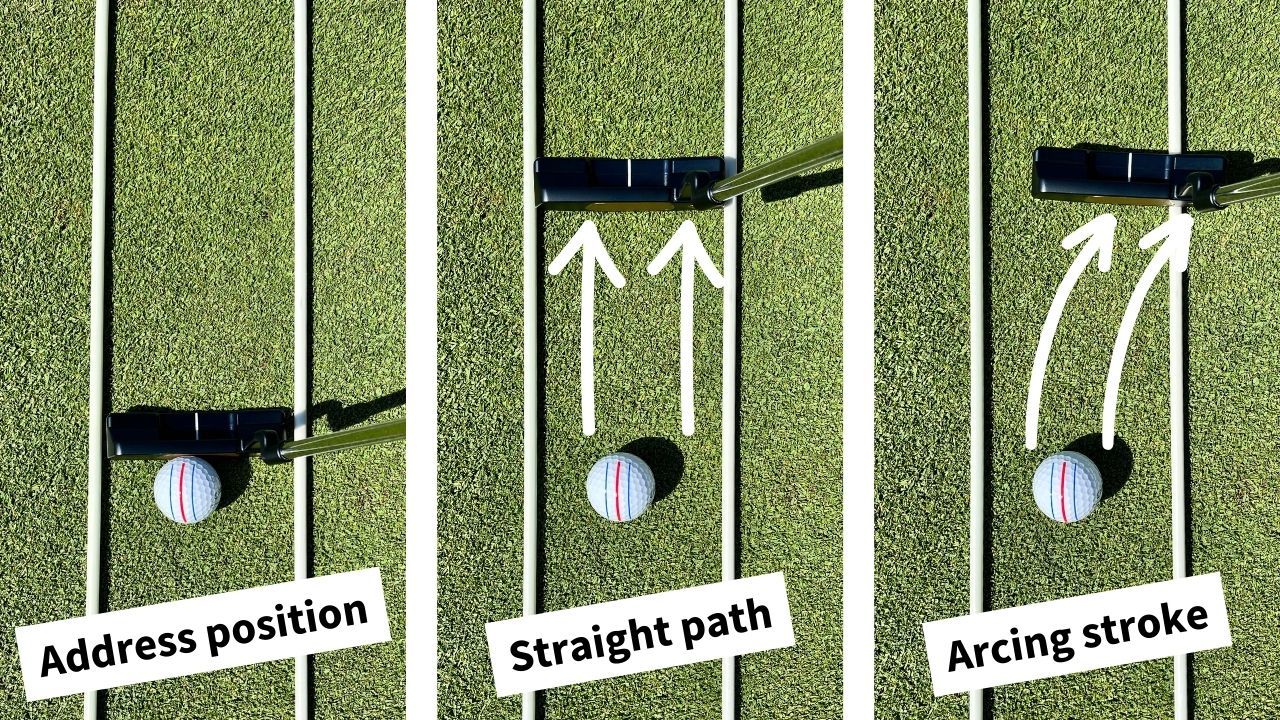
HOW TO TELL IF A PUTTER IS FACE-BALANCED OR HAS TOE-HANG
Hold the putter horizontally and position your finger on the shaft until you find the balance point where it hangs naturally.
Now observe the angle of the putter face.
A toe-hang putter will have its face droop towards the ground at varying angles while a face-balanced putter will have its face flat to the horizon line.
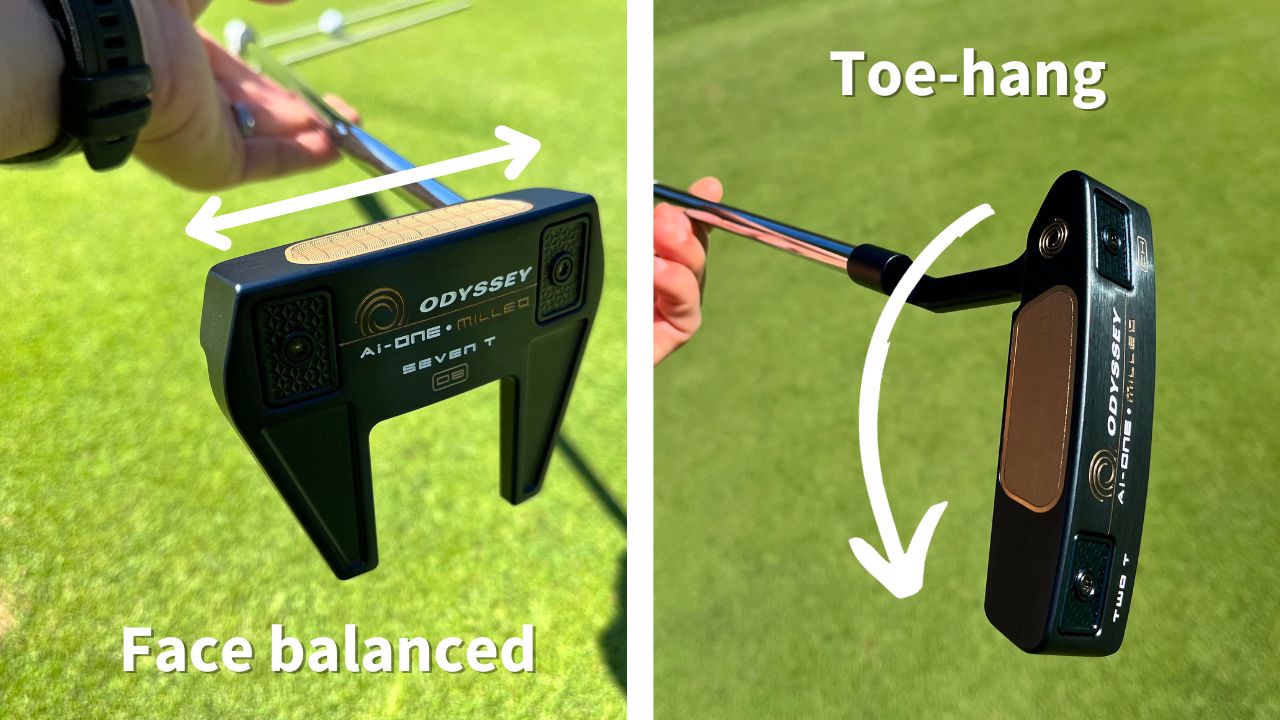
WHAT IS TOE-HANG AND FACE BALANCING AND WHY DOES IT HELP?
A toe-hang putter concentrates more mass towards the toe to encourage the putter head to release, or turn over, during a putting stroke.
It promotes an arcing stroke and helps the putter face rotate so it remains perpendicular to the curved stroke path for the duration of the putting stroke.
Toe-hang also assists in closing the putter face at impact, which is helpful if you’re missing putts to the right (for a right-hander).
Face-balanced weighting keeps the putter head more stable through the stroke by minimising face rotation.
That is why face-balanced putters work best for straight-line strokes, which theoretically shouldn’t open or close the putter face.
If you’re missing putts left (RH), face-balanced putters will also encourage the putter face to remain open.
WHY HOSELS ARE IMPORTANT
Ask the average golfer what they know about hosels and it’ll usually elicit the following response: it’s the thing that joins the shaft to the club head and it’s responsible for shanks.
Given the shanking connection, it’s understandable there’s not a lot of love for most hosels.
But in putters, it’s a very different story because the hosel largely determines whether a putter is face-balanced or has toe-hang.
The design and length of a hosel also controls how much toe-hang a putter has; a putter that hangs closer to the horizon line has less toe-hang than a putter that hangs near vertical.
HOSEL TYPES AND HOW THEY AFFECT PERFORMANCE
DOUBLE/SINGLE BEND
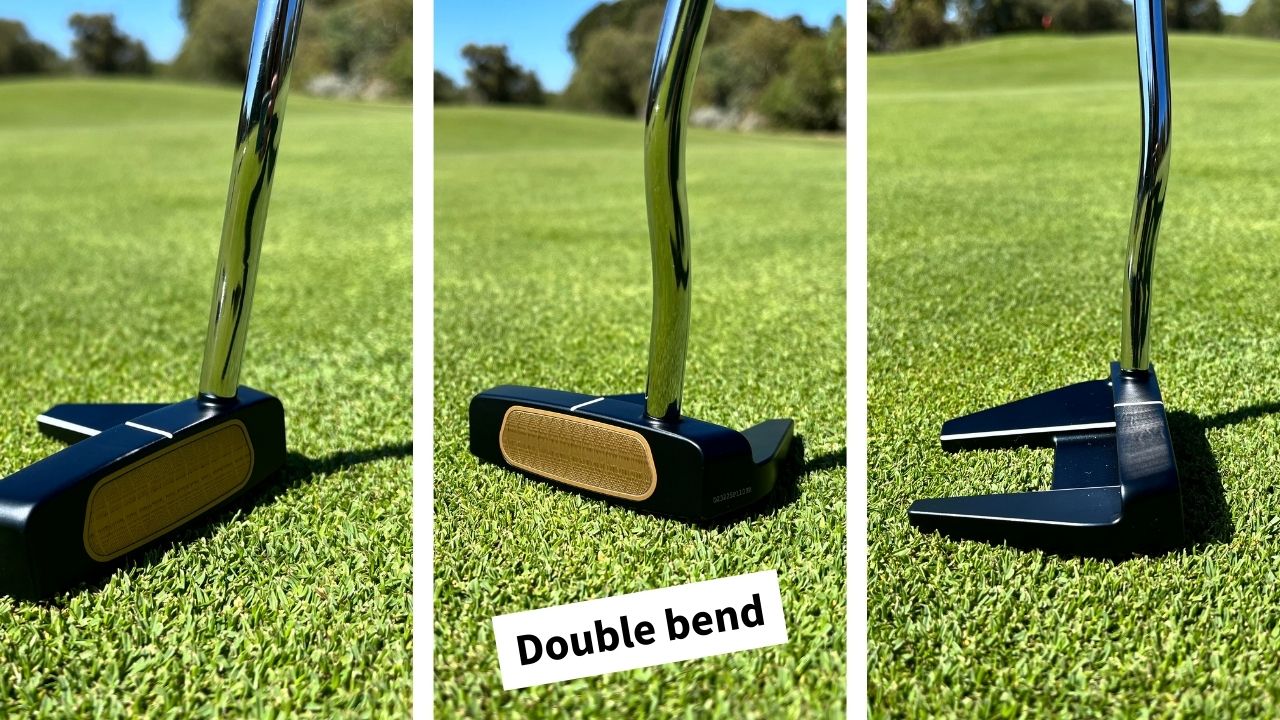
Large mallets and high-MOI putter designs are typically face-balanced and utilise an S-bend shaft, like the Odyssey double bend, that terminates directly into the putter head, instead of a hosel.
The high-MOI Odyssey Ai-One #7 fanged mallet is a face-balanced putter with a double bend shaft. However, by fitting a different hosel, such as a slant hosel, it becomes a toe-hang mallet putter.
Single bend shafts are also an option for face-balanced putters.
SLANT AND FLOW NECK
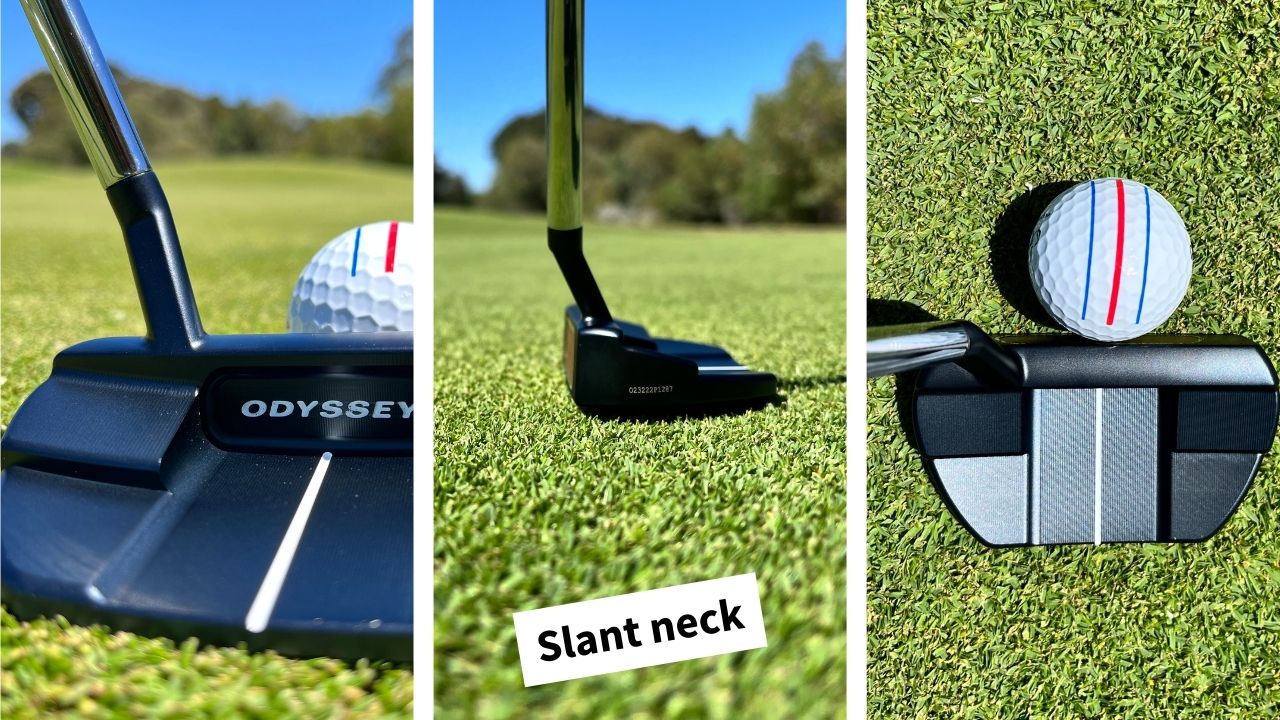
Blade-style putters and smaller-headed mallets are commonly fitted with hosels that have limited offset, such as slant and flow neck hosels.
Slant and flow neck hosels are short and usually provide aggressive toe-hang, which will suit a putting stroke that moves on a pronounced arc.
PLUMBER'S NECK/CRANK HOSEL
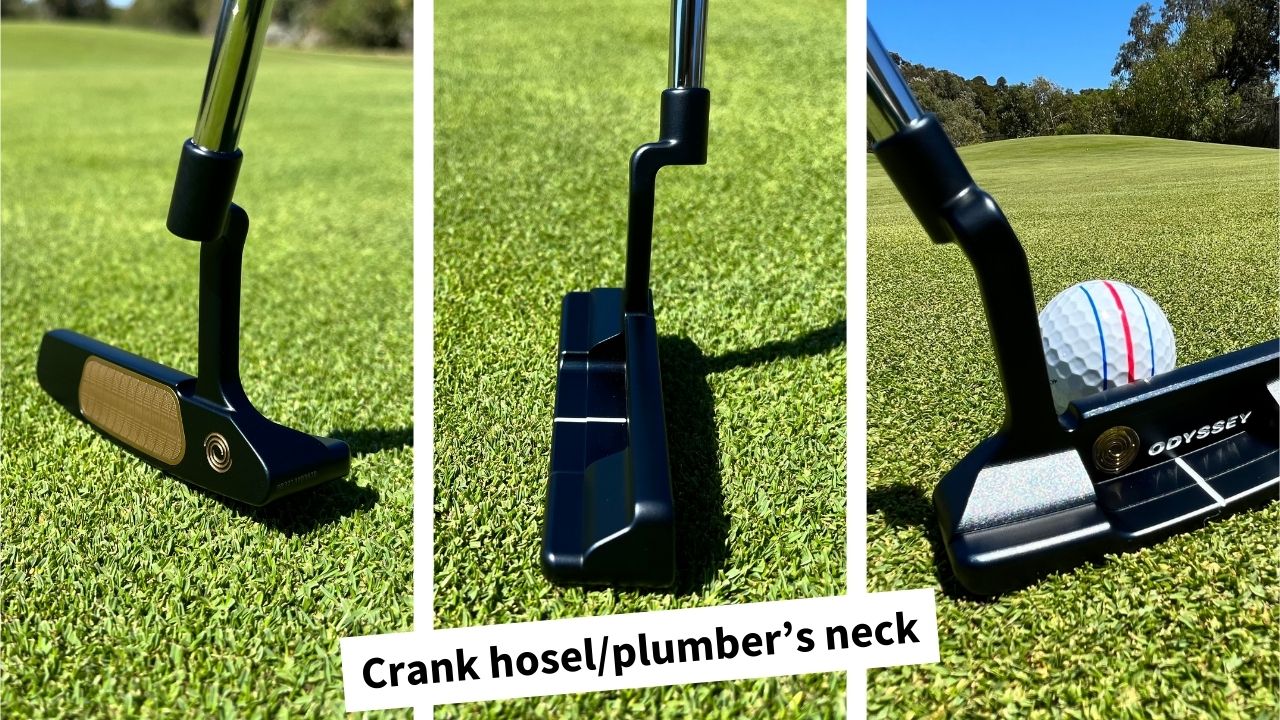
Hosels with more offset like the plumber's neck, which has a horizontal bend, typically have a moderate level of toe-hang.
A plumber’s neck hosel, also called an L-neck or crank hosel, will usually suit a stroke path that arcs slightly – one that doesn’t need an aggressive release of the putter head.
Long neck hosels are also usually available in plumber’s neck configuration but feature greater height on the elbow that joins to the shaft.
The additional length minimises the amount of toe-hang to create a very different feel. Long neck hosels are often used to produce a face-balanced putter, but there are long neck hosels that produce a toe-hang characteristic.
CENTRE SHAFTED
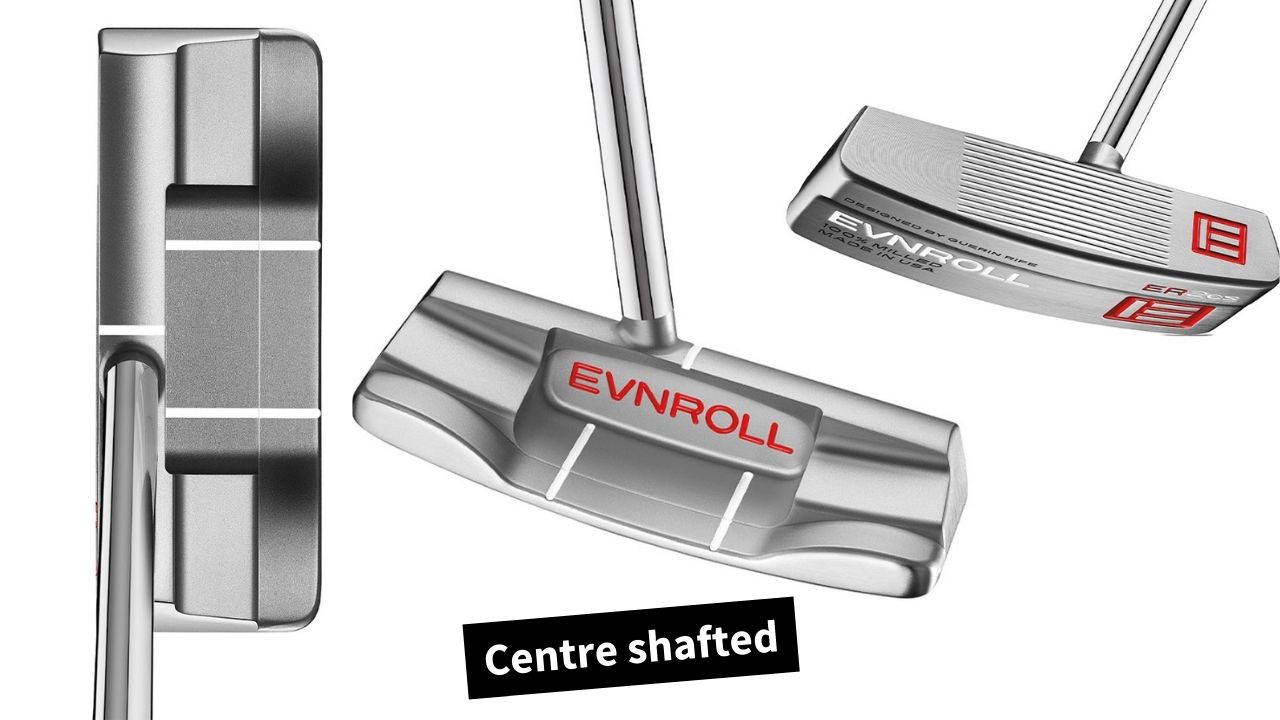
Putters that have the shaft connected to the centre of the putter head are usually face balanced.
Centre-shafted putters often have no hosel, with the shaft connecting to the putter head directly.
OFFSET
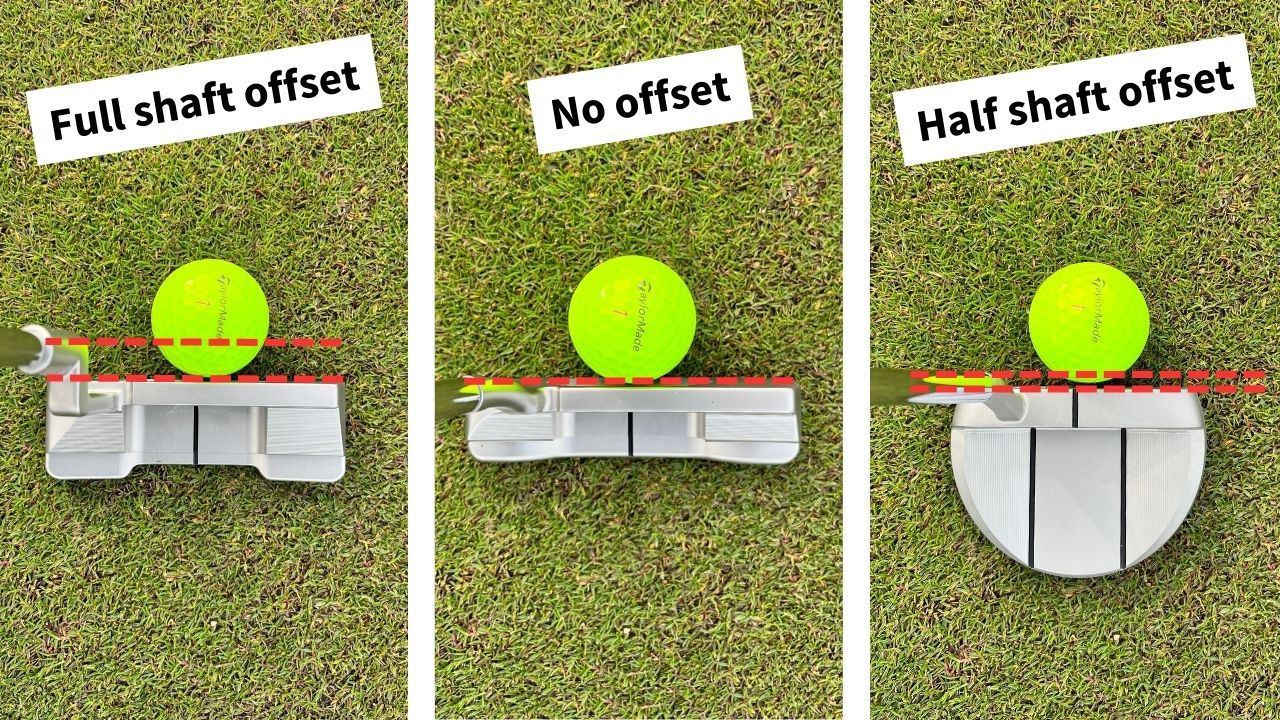
Hosel offset is measured in shaft widths and as a general rule the more offset in a hosel, the less toe-hang it will produce.
A full offset hosel will have the leading edge positioned one shaft width behind the putter shaft.
FACE BALANCED BLADE AND MALLET PUTTERS
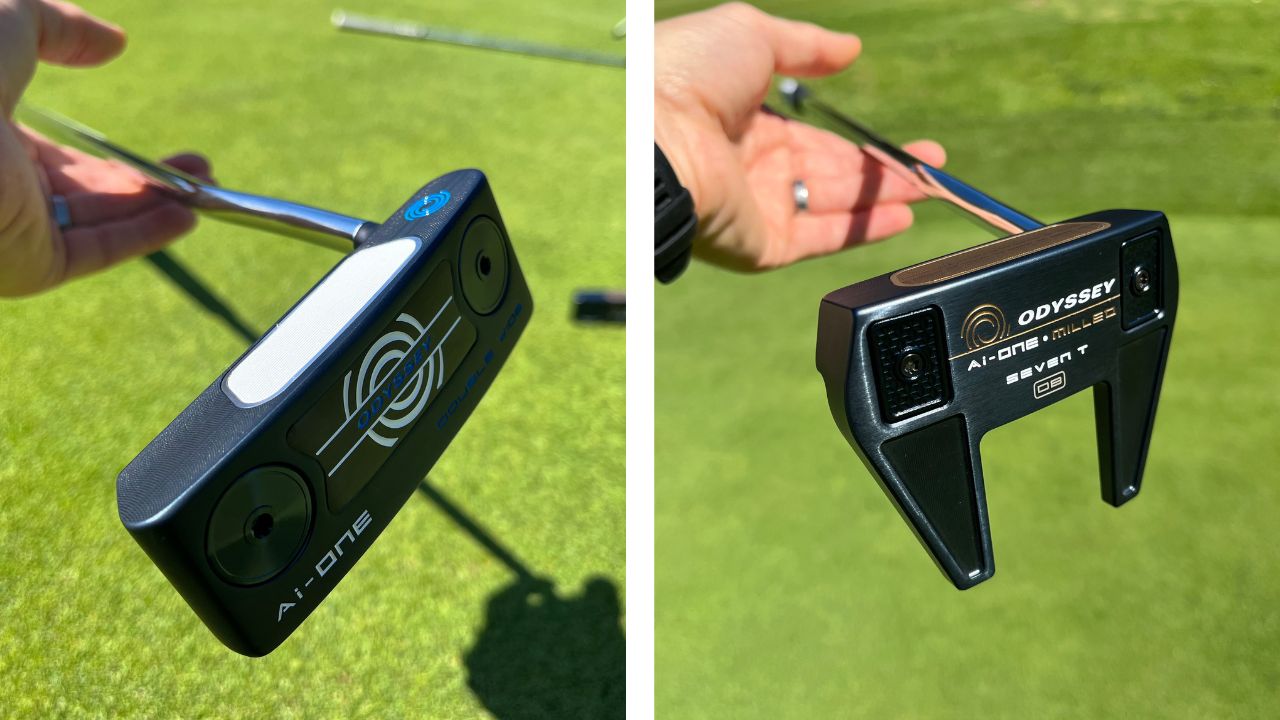
While it’s less common, there are face-balanced blade putters available.
The Callaway Ai-One Double Wide has a double bend shaft that alters dynamics to make it near face-balanced, but single bend and long neck hosels can also be used to achieve the same outcome.
And a mallet like the Odyssey Ai-One Milled Seven T is a face-balanced putter when fitted with a double bend shaft, or a toe hang putter with a slant neck installed.
CHOOSE YOUR HOSEL AND PUTTER WISELY
With an improved knowledge of stroke path, hosels, and putter balancing you now should have a better idea of which putters have long-term relationship potential.
Hopefully you’ll avoid the pitfalls and enjoy a long and fruitful connection with your perfectly matched flatstick.

|
Written by Jamie Martin Jamie Martin is currently locked in a battle to keep his handicap hovering around the mid-single digits. Despite his obvious short-game shortcomings, Jamie enjoys playing and writing about every aspect of golf and is often seen making practice swings in a mirror. |

